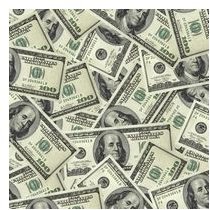Using Dividends from Mutual Funds for Retirement Cash Flow
A mutual fund is a pool of money that is invested by the fund manager on behalf of the investors. It is a pass through entity for tax purposes, meaning that all dividends and capital gains must be paid out to the shareholders, who are responsible for any taxes due on those payments. While a mutual fund must pay out all earned dividends each year, some funds are structured to pay dividends more frequently. Those dividends may be reinvested in the mutual funds, or they may be collected as cash at the investor’s discretion.
Income Funds generally pay dividends at least quarterly, with many income producing mutual funds paying even more frequently. Whether or not mutual fund dividends can be used for retirement cash flow is a function of both how often dividends are paid, and how high dividend payments from the mutual fund are.
How Much Income Can Mutual Funds Generate?
There are many different types of mutual funds that pay dividends. Some funds focus on maximizing dividend yield, while others try to maximize overall return regardless. Other mutual funds only consider dividends as a secondary factor. Funds that focus on dividend stock investing tend to have the highest dividend yields.
American Funds, for example, has several mutual funds that payout dividends. It’s Capital Income Builder fund’s objective to provide current income that exceeds the average yield on U.S. stocks and to provide a growing stream of income. Growth of capital is a “secondary” objective.
The amount of dividends paid out by mutual funds varies from fund to fund. In fact, the amount of dividends paid changes over time even from the same mutual fund. As such, investors need to be prepared for such variations in generated income.
Capital Income Builder, for example paid dividend income of 42 cents per share, 45 cents per share, 45 cents per share, and 69 cents per share each quarter in 2010. A retiree with 10,000 shares of the fund would have seen income of $4,200, $4,500, $4,500 and $6,900 respectively each quarter.
How Much to Invest
The trick to using mutual fund dividends as cash flow in retirement is that it takes a significant investment to generate reasonable amounts of income. In the example above, 10,000 shares generated over $20,000 income for the year. However, shares of the fund traded around $47 per share for much of year. In other words, a mutual fund investment of around $470,000 was required to generate $20,000 of income.
To determine how much income a fund will generate, calculate the dividend yield and then multiply that amount times the total investment planned for the fund. At 5 percent yield, an investor needs a $1 million investment to generate $50,000 per year in dividend income.
Such large numbers make it difficult to generate all cash flow in retirement from dividends. However, as a supplement to other retirement income, mutual fund dividends can be a great addition. If those dividends are generated by funds held inside of a Roth IRA, those dividends can be taken tax-free as well.
Image courtesy of Microsoft clipart.
Dividend information courtesy of American Funds.
